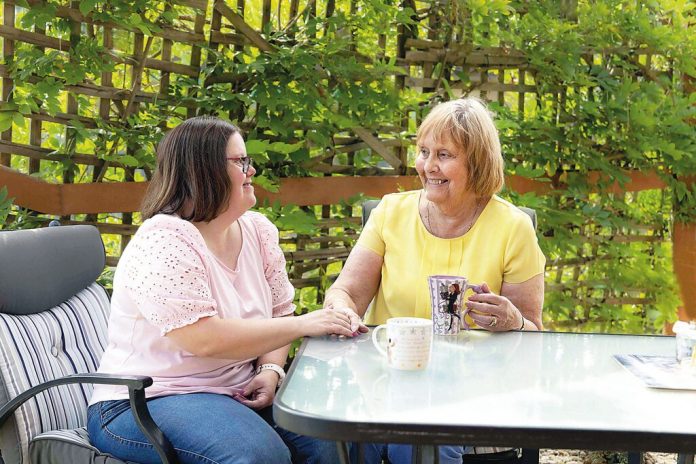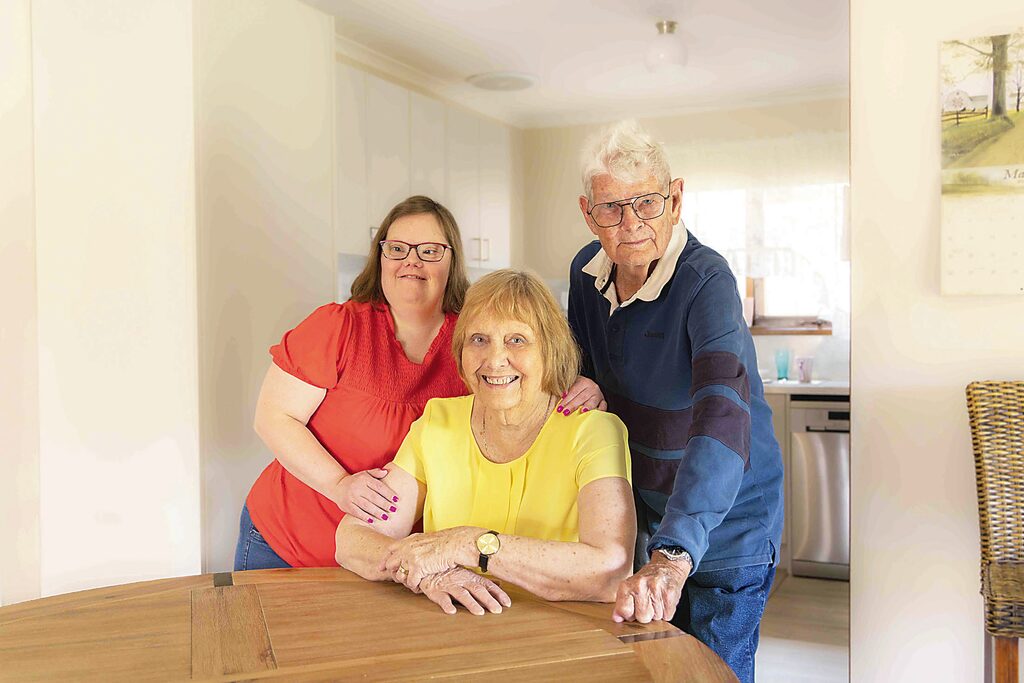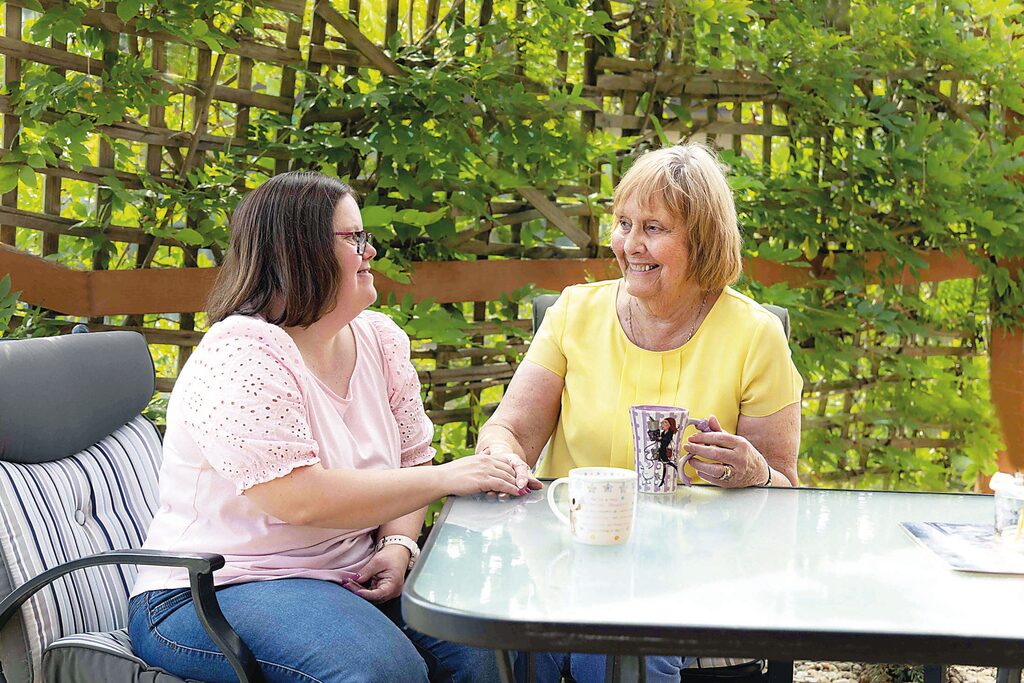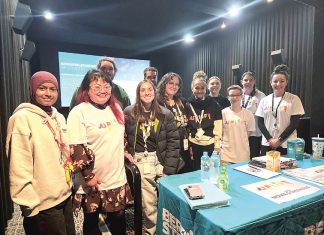
ZAIDA GLIBANOVIC
By ZAIDA GLIBANOVIC
AROUND 1400 women are diagnosed with ovarian cancer each year in Australia. It is the deadliest cancer affecting women in the country, with a five-year survival rate of just 49 per cent. Of course, no one wants to be diagnosed with any cancer. But when Traralgon local Judith Moore vividly remembers reading an article about ovarian cancer some years back, and she recalls thinking at the time: “That sounds particularly awful. I’d hate to get that.” Unexpectedly, Ms Moore was first diagnosed with ovarian cancer in June 2017, and her fears soon became a reality as she was faced with a tumour found in her fallopian tubes at the age of 74. “I had to have a big operation, it was a very big one (a full hysterectomy), and then I had to follow up with chemotherapy for eight months and at the end, they had said it had gone, but I still had to go and get checked by the oncologist,” she said. Like so many other sufferers of ovarian cancer, Ms Moore’s relief was short-lived. “Two and half years later, it came back, so it was back to chemotherapy again for six months weekly and at the end of that, then once again, I was clear of cancer,” she said. Last year, Ms Moore discovered her cancer had returned for a third time. “It did return about three months later and I was on chemo for last year for six months but unfortunately it hasn’t cleared up this time, it’s still there.” Now on a course of tablets, Ms Moore, in six weeks’ time, will have the chance to see the oncologist to choose whether to go through chemotherapy again. “I’m quite happy having chemo, as happy as you can be,” Ms Moore said. “When I go back to see the oncologist once every month, you kind of hold your breath until he tells you everything is fine.” When Ms Moore returned to the oncologist before her last diagnosis, she had the sense that something was wrong. “I had a feeling that everything wasn’t alright, not that I was in pain or feeling unwell, but I kind of changed complexion, and I thought that was strange.” When it comes to recovering and the future, Ms Moore is as tough as nails. “I try not to think about it but I’m not silly. I do know. I think week to week, and that’s how I get by,” she said. “I have a daughter with a disability, and she knows, she goes ‘You’re going to beat this mum?’ and I say, ‘I’ll try my very best’.” “Inside, I’m not well, but I’ve just found some kind of inner strength from somewhere, and I just hold onto that to get through and keep my fingers crossed that it’ll be gone,” she added. Ms Moore couldn’t thank Ovarian Cancer Australia enough for all the services and support they have provided her during her cancer battle. “They’re great; they have a nurse, Rosetta; she rings me up quite often, really and every time I see the oncologist, she always rings up to see what she said,” Ms Moore said. Ms Moore wanted to extend her gratitude to Latrobe Regional Hospital staff. “I have to say the nurses at the Latrobe Valley hospital and the chemo department deserve medals, I think they’re lovely young women. All my treatments and all my doctors have been very nice,” she said. Ovarian Cancer Australia chief executive, Jane Hill, said women diagnosed with ovarian cancer usually need an incredibly severe surgery, most commonly a hysterectomy and then chemotherapy. “It’s the deadliest of all women’s cancers, and it only has a 49 per cent survival rate, so each day in Australia, five women are diagnosed, and three women die from it,” she said. According to Ovarian Cancer Australia, ovarian cancer is a general term used to describe a cancerous (malignant) tumour starting in one or both ovaries. The ovaries are made up of three main kinds of cells: Epithelial cells, stromal cells and germ cells. Each of these cells can develop into a different type of tumour. The average age of women when they are diagnosed with ovarian cancer is 64. It is mainly diagnosed in women over the age of 50; however, there are cases diagnosed in younger women. Ovarian cancer is the eighth most common cancer in Australia. Currently, there is no reliable population screening test for early ovarian cancer. Research is underway to try and develop better screening tests in order to detect ovarian cancer at earlier stages and improve patient outcomes. “In the absence of a test, there are some common signs of ovarian cancer that women can be on the lookout for, but they are symptoms that are often attributed to more benign conditions such as pelvic pain, feeling full after eating a small meal, urgency or frequency after going to the toilet, if a woman does experience those symptoms that are unusual or persistence then they should go see their doctor,” Ms Hill said. The earlier a cancer is found, the more successful it will be in treating it. The most commonly reported symptoms of ovarian cancer are: Increased abdominal size or persistent abdominal bloating; Abdominal or pelvic (lower tummy) pain; Feeling full after eating a small amount, and; Needing to urinate often or urgently; Additional symptoms may include: Changes in bowel habits; Unexplained weight gain or loss; Excessive fatigue; Lower back pain; Indigestion or nausea; Bleeding after menopause or in-between periods, and; Pain during sex or bleeding after. If you are uncomfortable with your doctor’s diagnosis or are still concerned about unexplained persistent symptoms, you should seek a second opinion. “Most women have a very busy life they have roles such as mothers, they might work, they’ve got lots of responsibilities. A lot of the time, women don’t put their own health first because there are so many priorities that are competing, and there’s sometimes the thought that if they go to the doctor with these symptoms, they’ll be dismissed,” Ms Hill said. Ms Hill says people should, “encourage them if they’re not feeling 100 per cent actually to take the time to get checked out.” “I think ovarian cancer has been overlooked for too long, we need more awareness of it in the community.” The teal ribbon raises awareness for ovarian cancer, with Miss Hill wanting to make it as recognisable as the pink ribbon is for breast cancer. Ovarian Cancer Australia’s role is to save lives and ensure no ovarian cancer woman walks alone. “We have two priorities to support the women and the families in the here and now, the women who are diagnosed,” Ms Hill said. “We are proud to say that we have at present 700 women connected to ovarian cancer nurses.” “It’s a telehealth service, so it’s great for country patients so we can provide these services no matter where the women live.” Call Ovarian Cancer Australia on 1300 660 334 between 9am to 5pm to speak with an ovarian cancer nurse on the support and information helpline for support, information and referral. Ovarian Cancer Australia provides a holistic service that is not available anywhere else in Australia. People like Ms Moore can access a range of critical support services: from being linked to their own ovarian cancer nurse and a free telephone helpline, to resilience kits, information resources and support groups for women. In recent years, Ovarian Cancer Australia has extended that circle of support to include in-demand exercise and nutrition programs and peer-to-peer support groups. Ovarian Cancer Australia’s service network is under a lot of pressure, and with significant funding shortfalls, some of these programs may be at risk. At the end of the financial year, you can donate to Ovarian Cancer Australia. Donate before June 30 to ensure they can continue to help women like Ms Moore. Every time you donate to Ovarian Cancer Australia, you stand in solidarity with women living with ovarian cancer. You become an extension of their support network, and your generosity has a real impact on their lives in a meaningful way.











